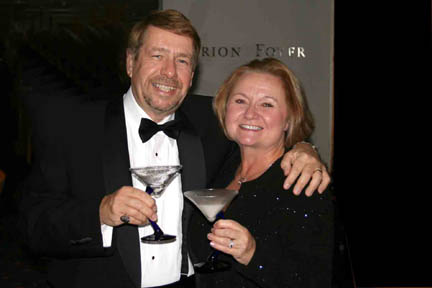Hawaii and Japan
20050114

3. Chinaman's Hat Island
This island is on the east coast. It's Hawaiian name is Mokoli'i, perhaps that is a more politically correct name these days. This side of the island is the windward. Even though the island of Oahu is only about 40 miles long and 24 miles wide there are three distinct climates. The windward which is often rainy and windy, the leeward which is very changeable, (It can pour torrential rain in minutes) and the valleys between which can be either.

 4. The Banzai Pipeline
4. The Banzai Pipeline
This beach is famous for it's surfing. Because of the coral reef and the undertow, it is dangerous. A top surfer was killed here last year. That's me at the end. The surf you see was not good enough on this day and a major contest was cancelled. The surf wasn't high enough. We were told this was six feet. It was probably eight to ten but, it can reach thirty feet and higher in the winter. (November on)

7. Germaine's Luau
Germaine's is a popular Luau on the west coast. It seldom rains here. Each day they prepare a Kalua pig in a traditional imu or underground pit. It is covered by leaves and cooks all day. The Luau is a mixture of food, drink and entertainment. We took a bus. Lucky we did. Germaine's is at Barber's Point.

 6. Queen Lil'uokalani
6. Queen Lil'uokalani
Hawaii's last monarch. She was removed from her throne and placed under arrest in her own palace by a coup of American businessmen. Although not supported by President Cleveland, a democrat, it passed through a republican provisional government. Many people in Hawaii still seek independence to this day and we met a few. The United States has offered an official apology however, it does not change anything.

 8. Polynesian Cultural Center
8. Polynesian Cultural Center
On the east coast is the PCC a Disneyland type village belonging to the Mormon Church. It is near Brigham Young University, Hawaii Campus and uses students as cast members. They are actually Mormons from Tonga, Tahiti, The Marquesas, Fiji, New Zealand, Samoa and Hawaii working for their university tuition. This is something we should consider in Canada. It is a great idea. This student was a favourite with Eleanor.

 14. Backyard of our Ryocan in Nara
14. Backyard of our Ryocan in Nara
Ryocan's are traditional hotels in Japan. Some offer meals but, they are definitely not bed and breakfasts. You sleep in a futon on a tatami mat. Sometimes comfortable but often it takes getting used to. Nara was the first capital of Japan in 710 and contains much of Japan's early culture.

 16. Inside our room
16. Inside our room
Here you can see the two futons on the tatami mats. The futon is about a three inch pad covered by a comforter. On the left side is a heater, the only way to heat your room. In this area the average temperature in November is 10 degrees C or 50F. While we were there is got up quite a few degrees higher. You only needed a light jacket. Also, out of the picture is a TV. We never watched while we were there but, it had a box that you fed 100 yen coins into. That's a little over $1.

17. Todaiji Temple
The is the largest wooden structure in the world. It was re-built in 1709 and is only two thirds the original size. It houses a giant bronze Buddha which took five years to cast and nearly crippled the economy of the time in 746. The Buddha is over sixteen meters tall. To complete the casting, the artisan climbed through the Buddha's nose.

 19. Cleansing before entering a Temple or Shrine
19. Cleansing before entering a Temple or Shrine
It is customary that you was your hands and take a small drink to cleanse your mouth before entering a Shinto Shrine or a Buddhist Temple. Most Shintos will also worship in a Buddhist Temple. We are still in Nara with Yoshiko, our guide. If you go to Nara, book a guide in advance. Yoshiko took us around Nara for nine and a half hours ... just Elle and I and it cost us her lunch. There is no charge and, there is no tipping anywhere in Japan. You will insult waiters, taxi drivers etc. if you try to tip. We correspond with Yoshiko often. Her knowledge of Japan was of great value to our trip.

 20. Shrine Day
20. Shrine Day
When a girl or boy reaches 30 days, three, five and seven years they dress in their finest Kimonos and go to the shrine with their parents for what is probably an equivalent to our first communion or baptism. There is probably $15,000 worth on Kimonos here or more. A good quality one will run you $5,000. You can of course rent them.

 22. Kinkakuji Temple, Kyoto
22. Kinkakuji Temple, Kyoto
In Nara, we were on our own. We met Carolyn in Kyoto which was Japan's second capital. Edo (Tokyo) became the seat of the Tokugawa Shogunate in 1603 and Kyoto became marginalized. In 1868 The emperor Meiji adopted Edo as his capital. This is the Golden Temple originally built in 1397 as a retirement villa for the third Shogunate. A monk obsessed with it's charm burned it in 1950 and it was rebuilt 1955 with gold leaf five times the original thickness. It was finished completely in 1987.

















